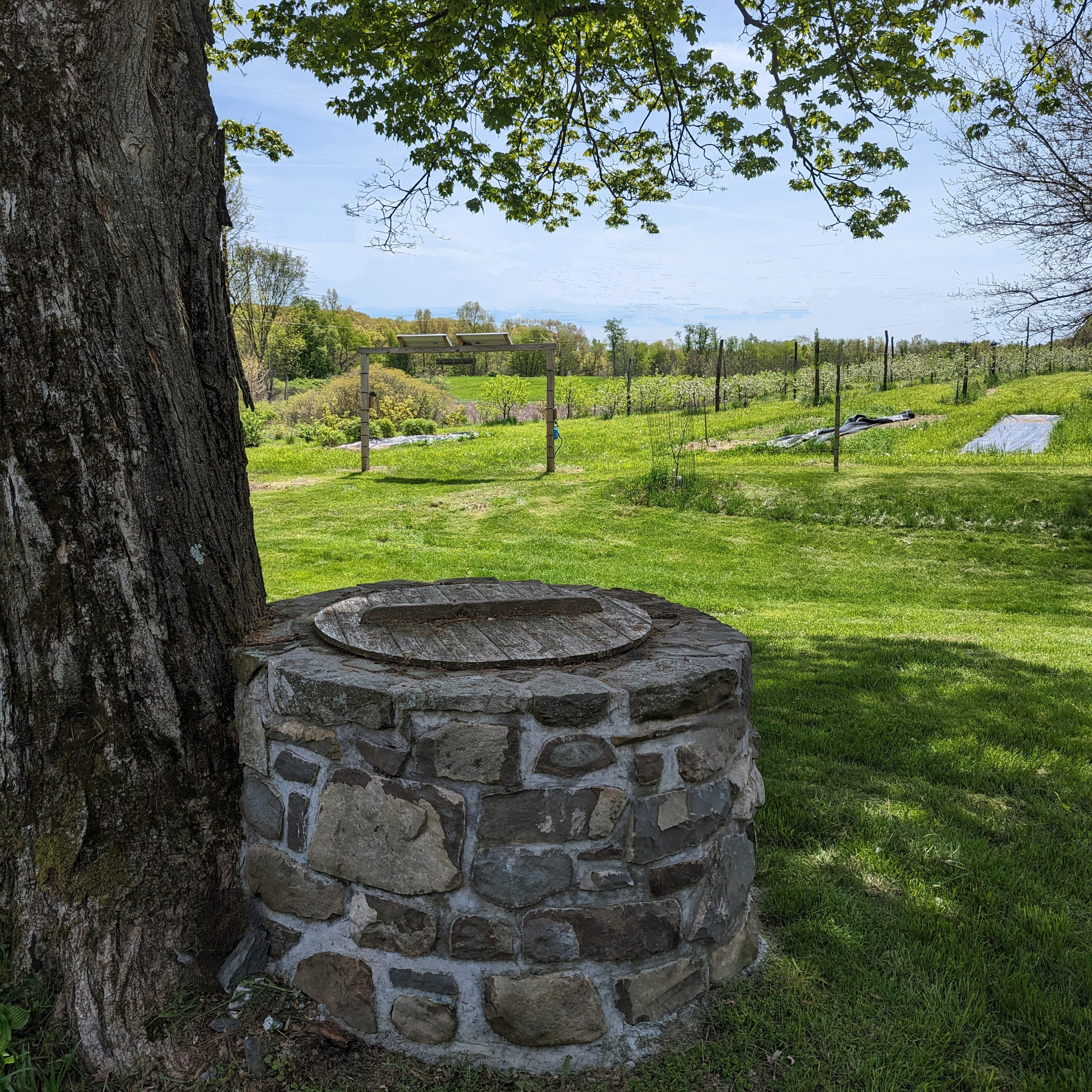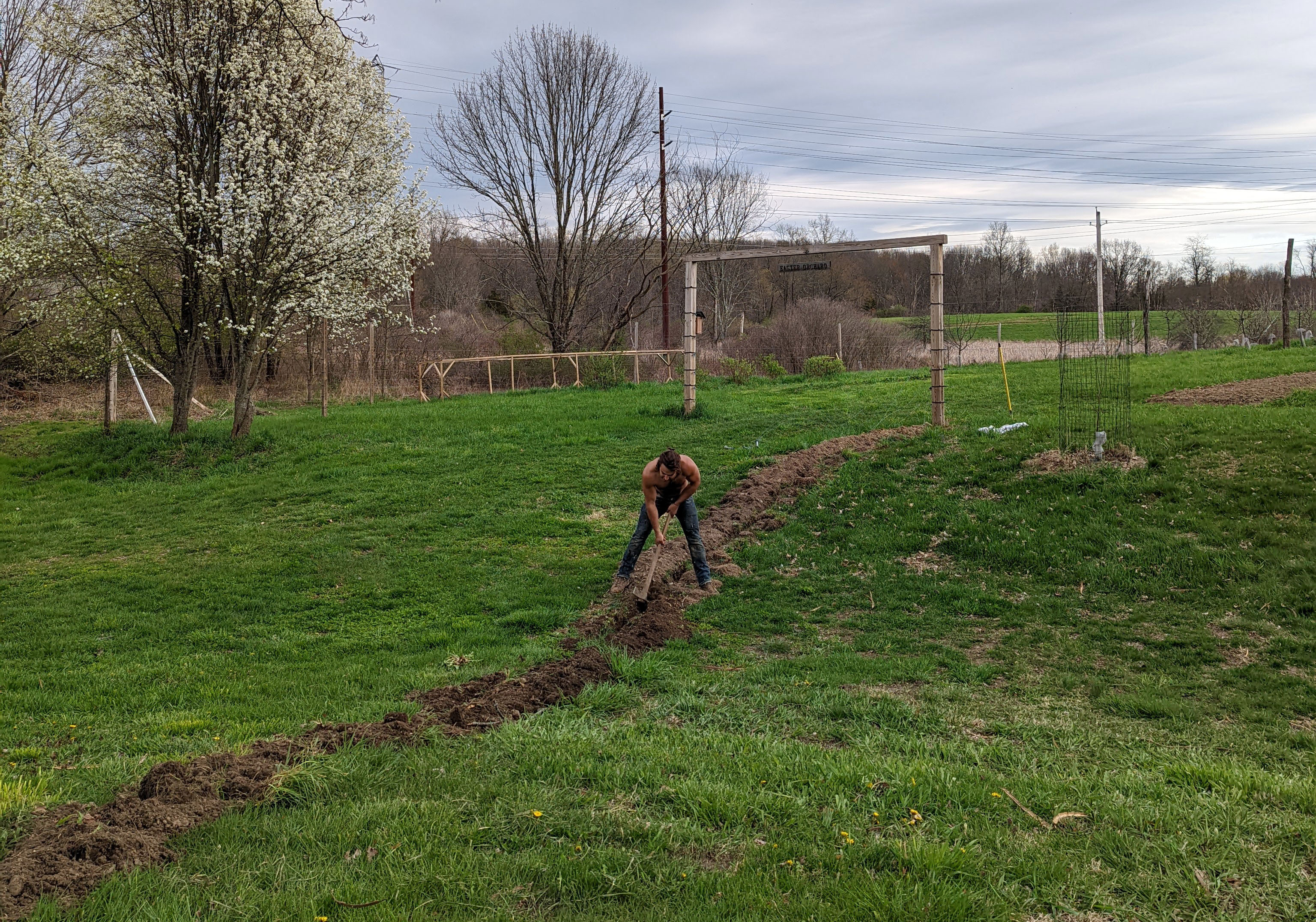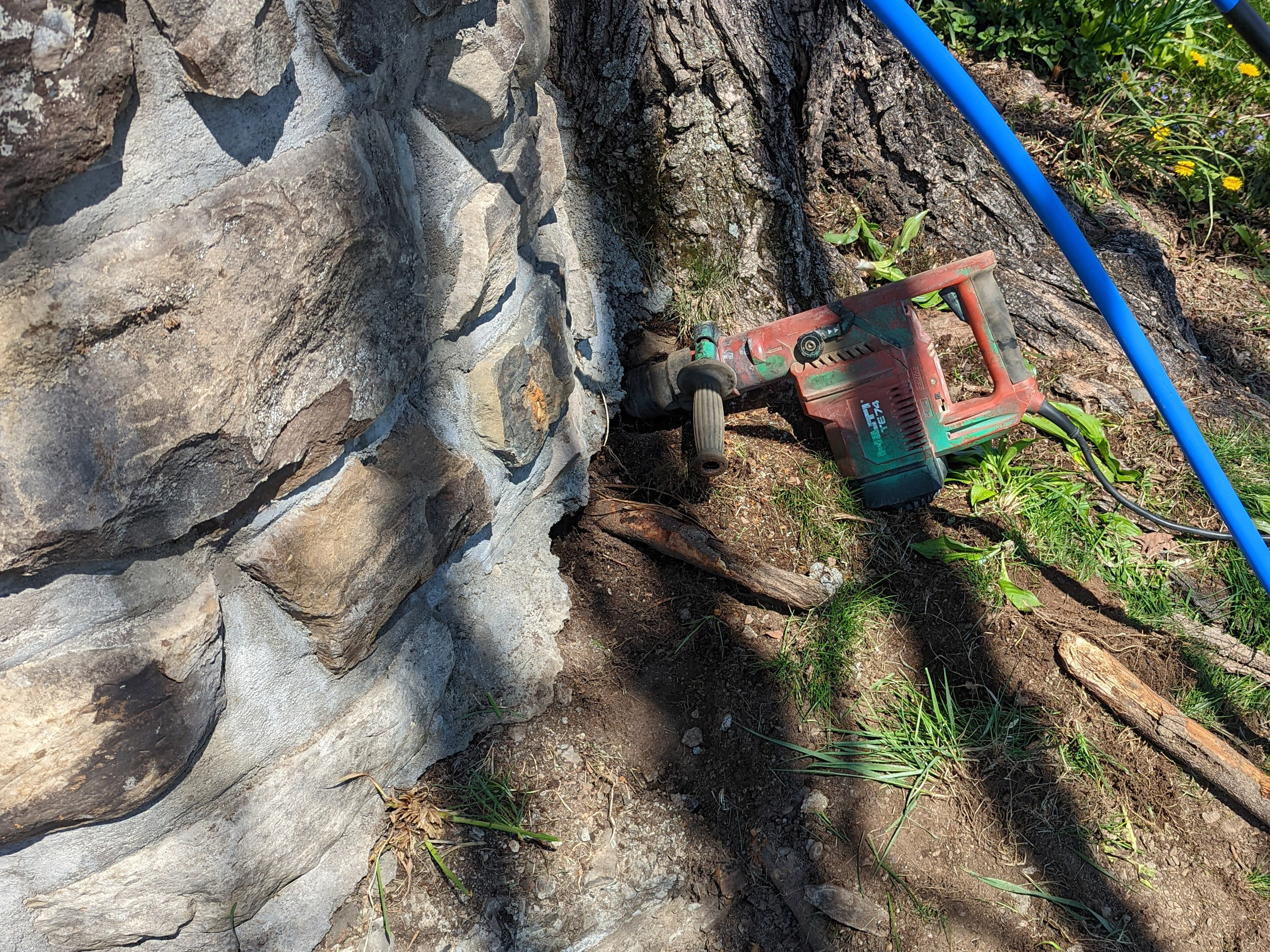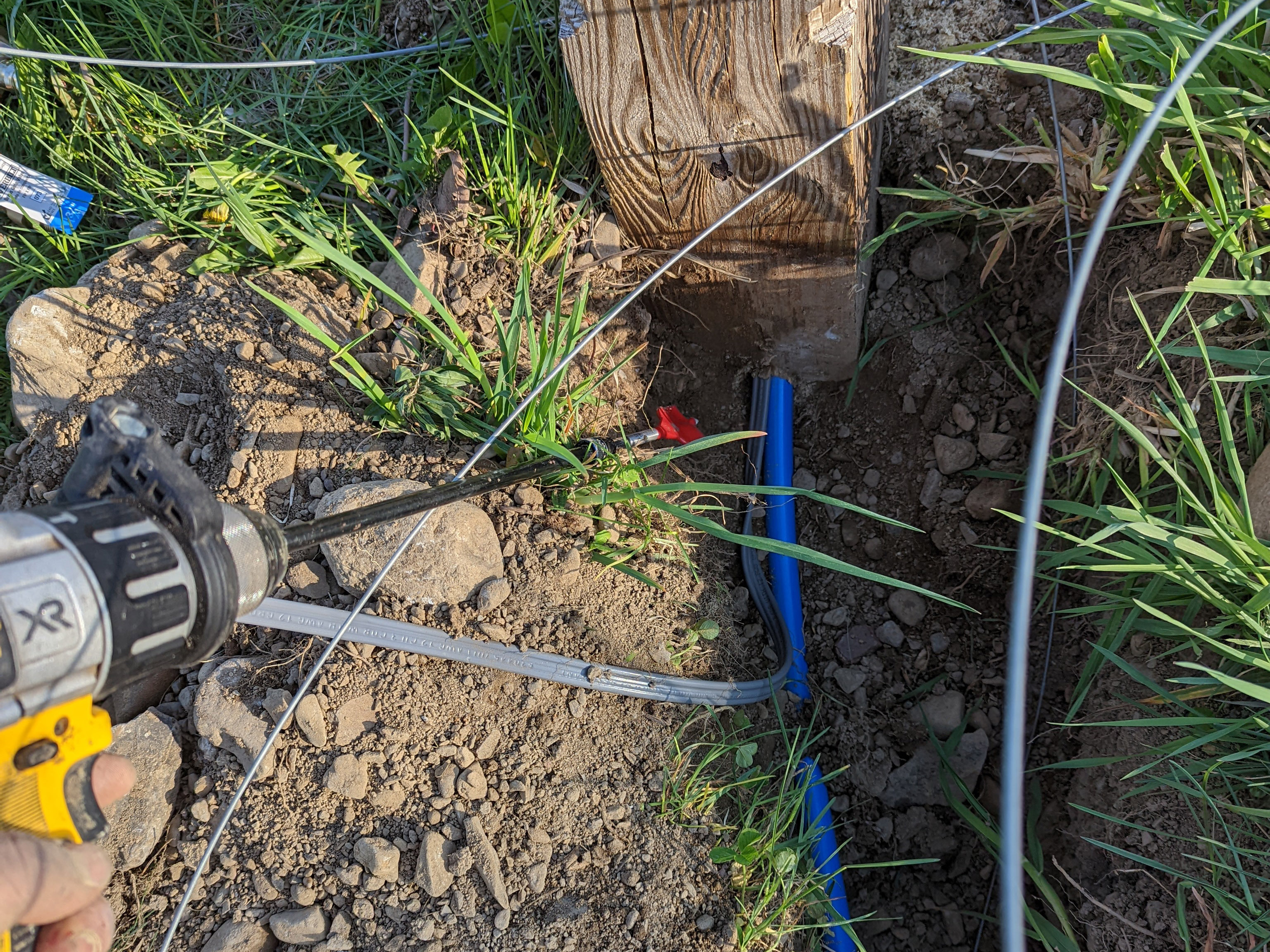DIY: Off-Grid Solar Irrigation from an Old Well
1 year ago • 34,984 Views • 28 Files
Last summer, I built a solar-powered pump system to irrigate my garden. It's automated based on pressure - whenever a valve or spigot opens, the pressure drops, and water is pumped out of the earth and into drip lines and sprinklers. The pump that I purchased was designed to fill a water tank or livestock trough, so I couldn't find much information on how to set it up for irrigation - hopefully my write-up of the process will help out other tinkerers. If you don't need or want to watch me tamp soil and mount panels, just skip to the pictures of the inverter wiring and piping: that section contains the real info on the setup.
I'll include detailed descriptions of the materials used in each step, and links if they are not common items you can find at a big box hardware store. There are more parts listed below throughout the descriptions, but for quick reference and budgeting here are the main components:
I was fortunate to have this old well sitting in my front yard (it was the primary source of water for the house until the 1980's). A shallow well like this is just a hand-dug hole lined with rocks, extending down into a soggy part of the ground. A pond or stream would work even better as a water source, since there's not all that much water in a well, and once it's pumped out you have to wait for groundwater to slowly seep back in. My property is very much on the grid, but I didn't want to put the irrigation demand on my domestic well water system, I like the idea of renewable energy, and I've always wanted to use this old well for something. I'm no prepper, but I also like the idea that my crops will continue to receive water and grow even if the power grid fails.
I needed to dig a 100ft-long trench from the orchard to the well in which to bury the water and electric lines. I considered renting a gas-powered "ditch witch," but after weighing the costs and headache of coordinating a delivery, I decided to do it the old fashioned way. I used a mattock to trench 12-14" deep. Yes, it should probably be a little deeper. I spread the work out over a few days, digging for an hour or so whenever I felt like getting a little exercise.
Here I'm laying the lines in the trench. The water line is 3/4" PEX tubing. I used PEX-A because I already have the 12v expansion tool, but PEX-B is cheaper, doesn't need special tools, and would work just fine. For the electrical wire, I'm using UF-B, which is underground feeder wire rated for direct burial, size 10/3 (10 gauge, 3 conductors plus 1 ground). Since the pump runs off an inverter, it requires 3 conductors. I believe the instructions said that 12 or 14 gauge would be acceptable for shorter runs between the inverter and pump. Looking back, I should have laid 1-1/2" PVC conduit in the trench, then run these lines inside of it. Conduit offers protection, and lets me add or replace lines without trenching all over again. At the very least, I should have run some control wire along with these lines for accessories such as the water level sensor which came with the pump, to turn the pump off should the well run dry.
To get from the trench into the well I drilled through the concrete and stone with a 1.5" carbide bit on a hammer drill. This took a while. I wasn't able to trench very deep here thanks to the tree roots, so I added dirt on top to bury the lines.
At the orchard end of the trench, I drilled through the bottom of the gate post. This way the lines can neatly run up the other side of the 6"x6" post where the controls will be mounted.
To fill in the trench I walked along the buried lines to hold them down, while pulling in dirt with a fire break tool called a McLeod
After partially filling in the trench, I laid caution tape in case anyone starts digging here in the future. I had some generic yellow tape laying around, but there is a special tape for this purpose.
As I filled in the rest of the dirt, I tamped with a 20lb sledgehammer. If you don't tamp down the dirt, the soil will slowly sink as it compacts itself over the next few months, leaving you with a permanent rut which is no fun for a mower.
I needed to know the depth at which to set the pump, and I was curious to find out exactly how much water was down there. The water level is about 15ft below ground, and then there is 8 to 9ft of water to the bottom. 2.5ft diameter x pi x 8ft deep = 63 cubic feet = 471 gallons. The pump has a max flow rate of 7.9gal/min so I can run the pump for at least an hour at a time without running the well dry. That's a very conservative estimate assuming full sun power, a wide open irrigation system, and no seepage of groundwater back into the well. So once the system is done I can safely start the irrigation timer at one hour, monitor the water level drop, and increase the duration from there. Ideally, I'd like to irrigate my whole apple orchard from this well.
 or [Better Version with Battery Connections](https://amzn.to/42qh8Ty)
2. [Pressure Switch](https://amzn.to/42qYPNX)
3. [Solar Panel, x2](https://amzn.to/3nNAhjs)
4. [Pressure Switch](https://amzn.to/3nSy2eB)
5. [Irrigation Timer](https://amzn.to/3LOtrSs)](https://cdn.imgchest.com/files/w7w6c26wexy.jpg)













